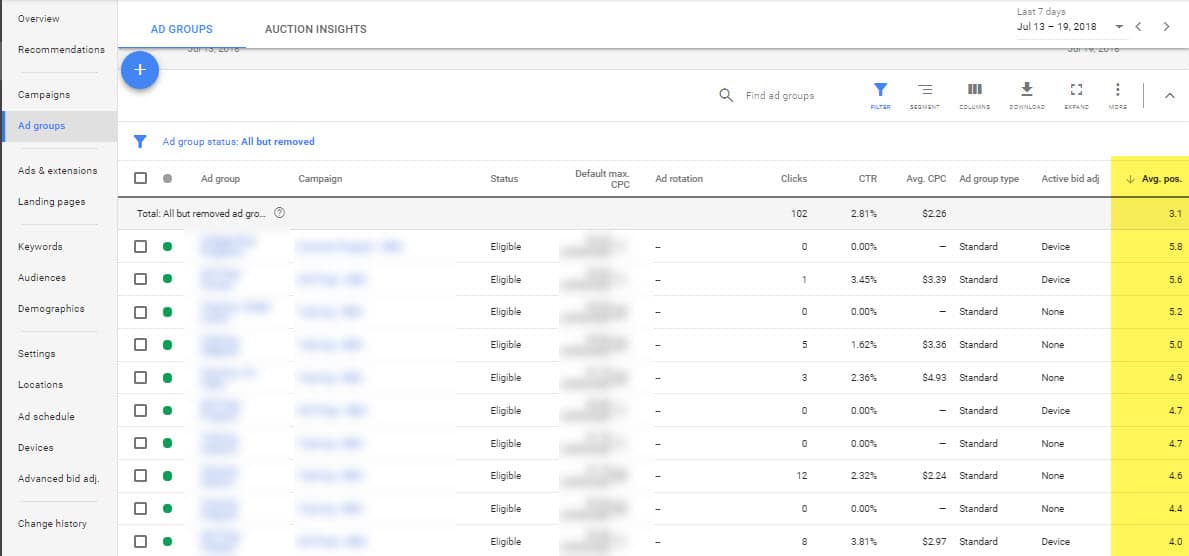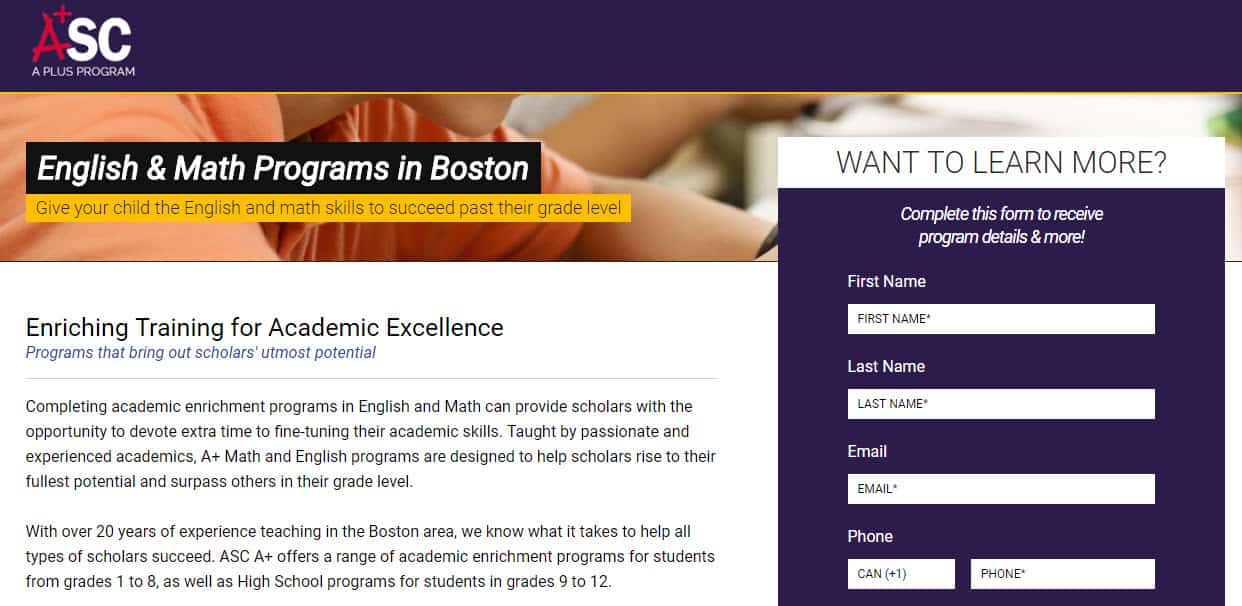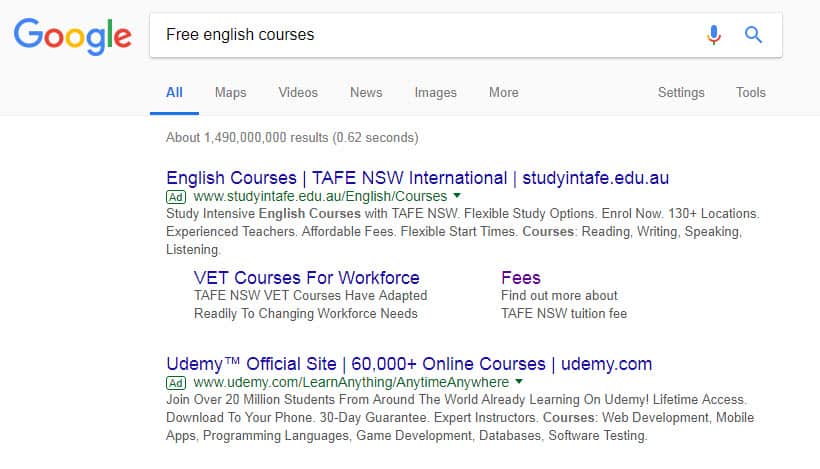
Pay per Click (PPC) advertising can be tricky to get right. Between selecting the right keywords, budgeting properly, and creating ads that will stand out from the crowd and capture the imagination of your audience, perfecting the process can take time.
The good news is that PPC campaigns are also easy to adapt and improve over time. By monitoring your results, you can gain actionable insights that will help you adjust your targeting, bids, and ad content to improve your chances of success.
While this process can seem complicated for many education professionals, it doesn’t have to be. Here are a few simple steps you can take to optimize your PPC campaigns for maximum performance.
1. Start With a General Review of Your School’s Active Keywords
As a first step, it’s usually a good idea to conduct a quick general review of all your active keywords and their performance. You can do this by simply selecting the keywords tab in Google AdWords or Bing Ads, and both platforms will allow you customize which metrics you want to view. Good key performance indicators (KPIs) to evaluate would include areas like clicks, impressions, average cost per click, conversion rate, and cost per conversion.
Example: A typical keyword performance overview in AdWords.

A general review like this will allow you to identify anything in your higher ed PPC campaigns that might need your immediate attention, such as irregularities in ad spend or position, incorrect budgeting, or abnormally low performance. From there, you can explore any of these issues at a more granular level.
2. Evaluate Your Higher Ed PPC Campaigns by Location
Once you have a general idea of how your campaigns are performing, you can begin to look into specifics. One area which can be extremely important in today’s student recruitment market is performance by location.
Whether schools are looking to increase their visibility in the local search or targeting a number of different international markets, geotargeting has become an increasingly important part of online advertising. AdWords and Bing will both allow you to view ad performance within small geographical areas, allowing you to adjust bids to improve your visibility in locations that are underperforming, or to capitalize on opportunities in fruitful markets.
Example: This example of an AdWords campaign being run in various locations throughout Spain shows the disparity that can exist in performance in different locations throughout a larger market, particularly the highlighted locations of Ibiza and Santiago De Compostela.

In addition to analyzing your PPC initiatives by location, it may also be useful to view and adjust your performance by language, device type, or even time of day, depending on your specific needs and objectives.
3. Review the Average Position of Your Student Recruitment Ads
The Average Position metric in PPC indicates the mean average placement in which your ads appear in search results. An average position between 1 and 4 will indicate that your ads usually appear on the first page, while any numbers higher than that are mostly being shown on subsequent SERPs. Average Position can be reviewed at campaign, ad group, and keyword levels.
Example: A view of the Average position of a campaign in AdWords.

This metric can be extremely instructive, particularly when viewed with other KPIs in mind. For example, if an ad with a lower average position is not attracting the amount of leads you want, it might be an indication that you need to increase your budget in order to improve its placement.
Conversely, however, it’s important to remember that a high average position isn’t always a good thing. An ad with an Average Position of 1-2, for instance, may have a very high cost per lead or cost per conversion, meaning that running it isn’t cost-effective. Decreasing your bid and seeing if you can still hit your targets from a less prominent position may be worthwhile.
Keep in mind too, that Average Position is determined by a combination of both your bids and the Quality Score of your ads. Search engines use this system in order to ensure that relevant ads which attract a lot of clicks are given an advantage over low quality ads. As a result, working on refining the copy of your ads, creating customized landing pages, and other elements to make your ads more engaging could be a way to improve your average position without having to spend more.
4. Compare Your School’s Results Over Different Time Periods
If you have been running ads for a while, your school will have accumulated a fair amount of data on past campaign performance that could prove instructive. Comparing your campaigns week over week or month over month will give you a good sense of whether performance has slipped, or if any previous tweaks you made to optimize your ads have had the desired effect.
Example: A month over month comparison in AdWords.

Year over year comparisons may also be helpful to give you an idea of how much better or worse you are performing than this time last year, particularly if the amount of inquiries and applications you receive are significantly heavier or lighter at different times of year.
Keep in mind, however, that the raw numbers don’t necessarily always tell the full story in these comparisons. Budgetary changes, economic fluctuations, and lead quality can all contribute to either improvements or declines in your performance compared to previous periods, and it’s worth considering the mitigating circumstances around any changes before jumping to conclusions.
5. Review Lead Generation Metrics to Evaluate the Overall Success of Higher Education PPC Initiatives
When optimizing campaigns in PPC for higher education, metrics related to lead generation will be among the most important for you to analyze. As a starting point, you will want to review the amount of leads each live ad is generating in order to see whether the numbers are in line with your expectations and goals.
From there, you can view the cost per conversion metric on each ad too, to see just how much value your campaigns are generating. Keep in mind that this figure could be higher for some ads than for others, depending on the specific courses and keywords you’re bidding on, and it may take some trial and error to find bidding strategies that maximize your ROI.
In order to ensure these figures are accurate, it’s also important to properly define what constitutes a conversion for one of your ads. Depending on the type of campaign you are running, it could be dialing a phone number, filling out a form, or downloading a brochure or other offering. You can define this by setting up conversion tracking in AdWords, ensuring that a conversion completion is registered when your desired action is taken.
Example: A landing page for ASC A+, who provide afterschool programs for children in Boston. The goal for a PPC campaign leading to this page would most likely be the completion of the form on the right.

Once you have conversion tracking set up, you should also periodically check to make sure the tracking code has been implemented on your landing pages properly. If you notice a major discrepancy in your results, a broken or improperly configured tracking code may be the issue.
6. Filtering Out Negative Keywords is Crucial for Schools
Making proper use of negative keywords is an important part of any higher education PPC campaign. Filtering out negative terms can stop your ads appearing in searches which have no relevance to your school, will produce low value leads, or might otherwise result in wasted impressions and ad spend.
Example: This ad for TAFE NSW’s paid English courses shows up under a search for free English courses. While some schools may opt to do this as a strategic choice, filtering the word ‘free’ using negative keywords might eliminate clicks from low quality leads.

While your school can identify and select a number of terms for your negative keywords list when you first set up a campaign, it’s important to continuously monitor and add to the list as you progress, too. When optimizing your campaigns, viewing the ‘search terms’ tab for selected keywords will show you what searches your ads are showing in.

In the above example, which relates to a campaign for an aesthetics course, you will note that one particular search the ad showed in was ‘aesthetics room for rent in Brampton.’ This kind of search is unlikely to garner many high quality leads, and using the negative keywords tool to filter it out could be a good way to stop the mistake from recurring.
7. Schools Should Replace Ads That are Not Producing Leads
While some of the steps above will help to improve the effectiveness of your ads, it will sometimes be the case that they won’t be enough. If you find that a particular ad is continuously underperforming, the best option will often be to switch it out for a different version.
In this situation, tweaking the copy, emphasizing different aspects of a course, and altering the call to action can all help an ad to resonate with prospective students more and produce better results. As a general rule, it’s a good idea to have a few different ads for particular courses or programs prepared so that you can pause and replace underperforming ads with alternate versions straight away.
Keep in mind that if the click rate on an ad is high but the conversion rate is poor, it may point to an issue with your landing page rather than the ad itself. If this is the case, you can experiment with tweaking elements of its design, copy, CTA, or form in order to increase the likelihood of prospective students converting.
While getting the most out of PPC for education can require some effort, well-run and optimized campaigns can be an extremely worthwhile investment for schools. Well-run initiatives can allow you to penetrate new markets and improve your chances of being seen by prospects in a much more cost-effective manner than traditional advertising. PPC can even increase your organic search visibility in the long run, as the amount of prospects engaging with your ads boosts your website’s online authority. By following these steps, you’ll be on the right track to reaching these goals.







